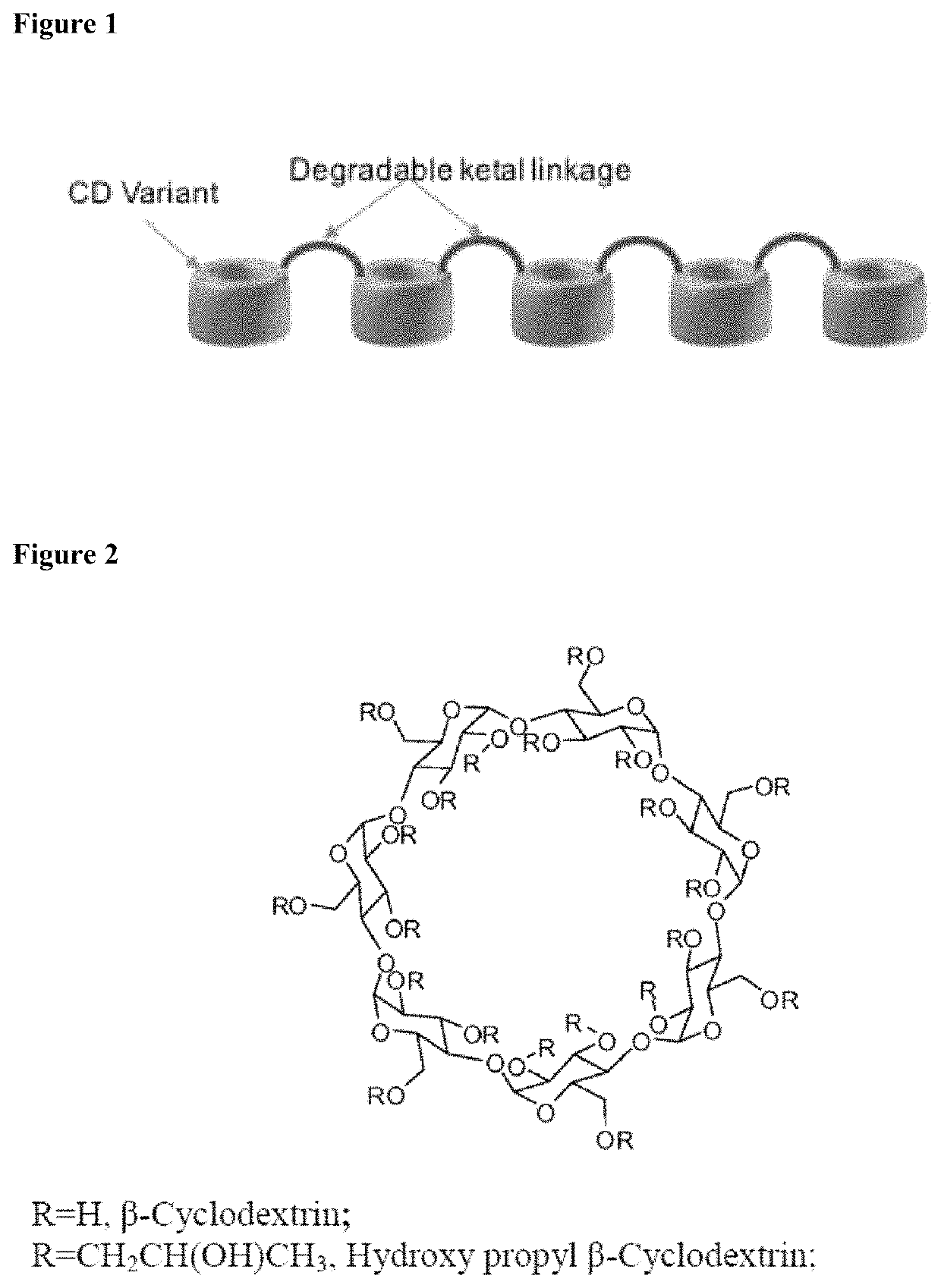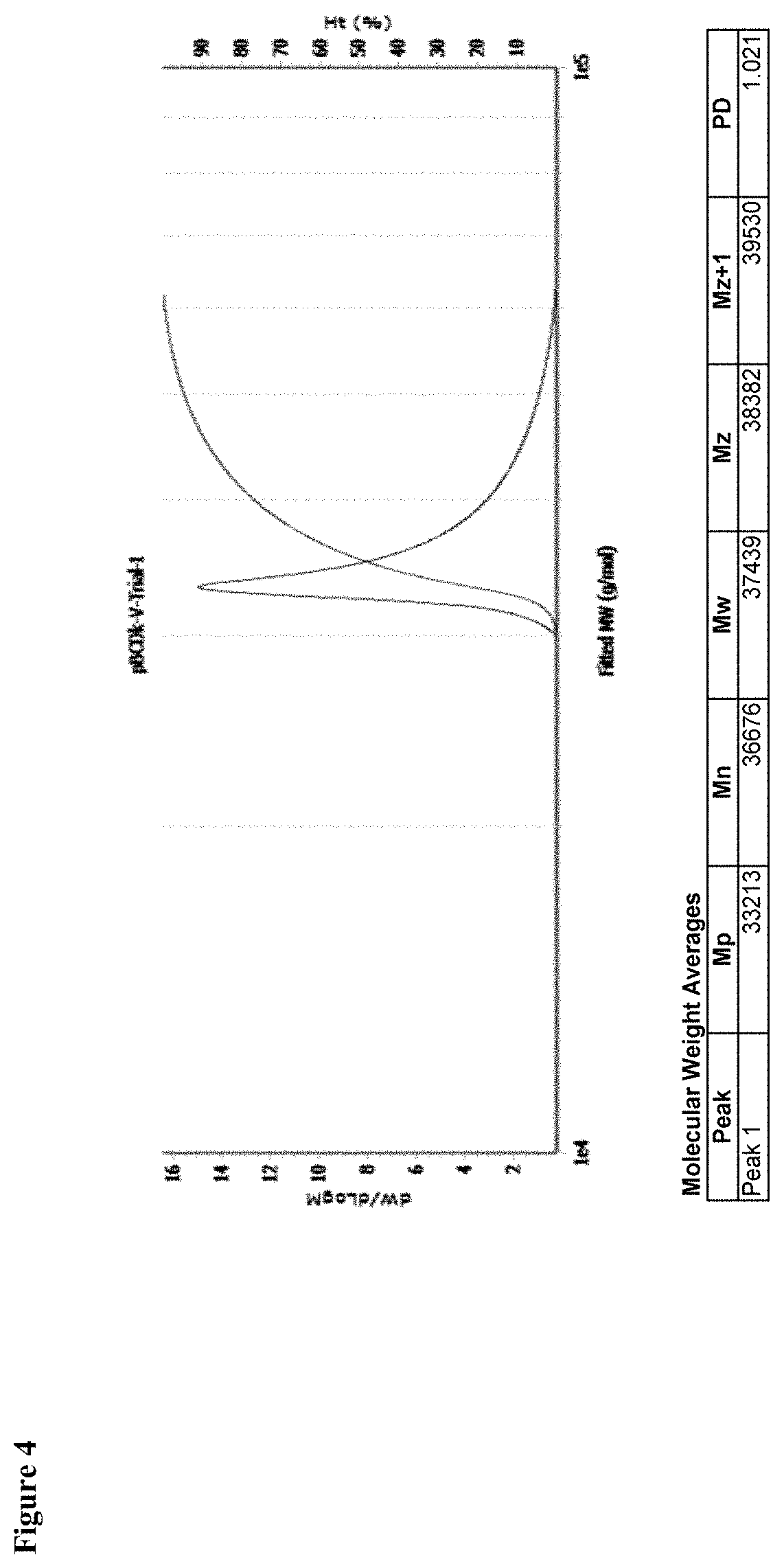Cyclodextrin based polymers, methods, compositions and applications thereof
a technology of cyclodextrin and polymer, applied in the field of macromolecular therapeutic agents, can solve the problems of limited treatment options, cholesterol, lipid disorders, and the lik
- Summary
- Abstract
- Description
- Claims
- Application Information
AI Technical Summary
Benefits of technology
Problems solved by technology
Method used
Image
Examples
example 1
Procedure for Synthesis of pbCDK Polymer
Step 1: Synthesis of biphenyl-4,4′-disulfonatecapped β-CD (1)
[0274]
[0275]To a solution of β-CD (about 10 g, 8.81 mmol) in about 250 ml of freshly distilled anhydrous pyridine, about 2.78 g (7.93 mmol) of biphenyl-4,4-disulfonylchloride is added in four equal portions at about 15 minute intervals. The resulting solution is stirred at about 60° C. under nitrogen atmosphere for an additional 3 hours and the solvent was removed to dryness in vacuum at room temperature. The residue was subjected to column chromatography using gradient elution of 10-20% water in acetonitrile. Fractions were analyzed by HPLC and the appropriate fractions were combined. After removing acetonitrile on a rotary evaporator, the resulting aqueous suspension was lyophilized to dryness. This procedure gave about 5.42 g (40% yield) of βCD-(OTs)2 (Compound 1). 1H NMR (300 MHz, H2O) δ: 3.58-3.65 (t, 19H), 5-5.3 (q, 7H), 3.9-4.3 (t, 7H), 3-3.2 (d, 7H), 3.5-3.7 (t, 14H), 7.6-8.1...
example 2
In Vitro Cellular Uptake Study
[0286]Polymer A was labelled with Tetramethylrhodamine (TRITC) dye to obtain Polymer A-TRITC. NPC patient derived fibroblasts were seeded in 8 well chamber slides at a density of 6000 cells / well. 50 μM of Polymer A-TRITC was added to the wells and the cells were allowed to incubate for 4 h. At the end of the 4 h incubation, the spent media was removed and the cells were washed with PBS thrice to remove any unbound polymer. Imaging was performed using the Floid Cell Imaging System. (FIG. 8).
example 3
Subcutaneous Administration of Polymer A in Mice
[0287]An HPLC-UV based bioanalytical method was developed in mouse plasma for Polymer A. The method was linear between 13.4 and 500 μg / ml plasma, with an LLOQ of 13.4 μg / ml, was precise and accurate. The recovery was >90% from plasma and tissues. The PK and tissue distribution of pBCDK was performed in mice following a single sub-cutaneous dose of 100 mg / kg. The concentration of Polymer A in various cells were monitored over 24 h. Uptake and retention of Polymer A in organs including brain, lungs, liver, spleen, and kidney were observed (FIG. 9). Error bars in FIG. 9 are SEM.
PUM
| Property | Measurement | Unit |
|---|---|---|
| polydispersity index | aaaaa | aaaaa |
| polydispersity index | aaaaa | aaaaa |
| polydispersity index | aaaaa | aaaaa |
Abstract
Description
Claims
Application Information
 Login to View More
Login to View More - R&D
- Intellectual Property
- Life Sciences
- Materials
- Tech Scout
- Unparalleled Data Quality
- Higher Quality Content
- 60% Fewer Hallucinations
Browse by: Latest US Patents, China's latest patents, Technical Efficacy Thesaurus, Application Domain, Technology Topic, Popular Technical Reports.
© 2025 PatSnap. All rights reserved.Legal|Privacy policy|Modern Slavery Act Transparency Statement|Sitemap|About US| Contact US: help@patsnap.com



